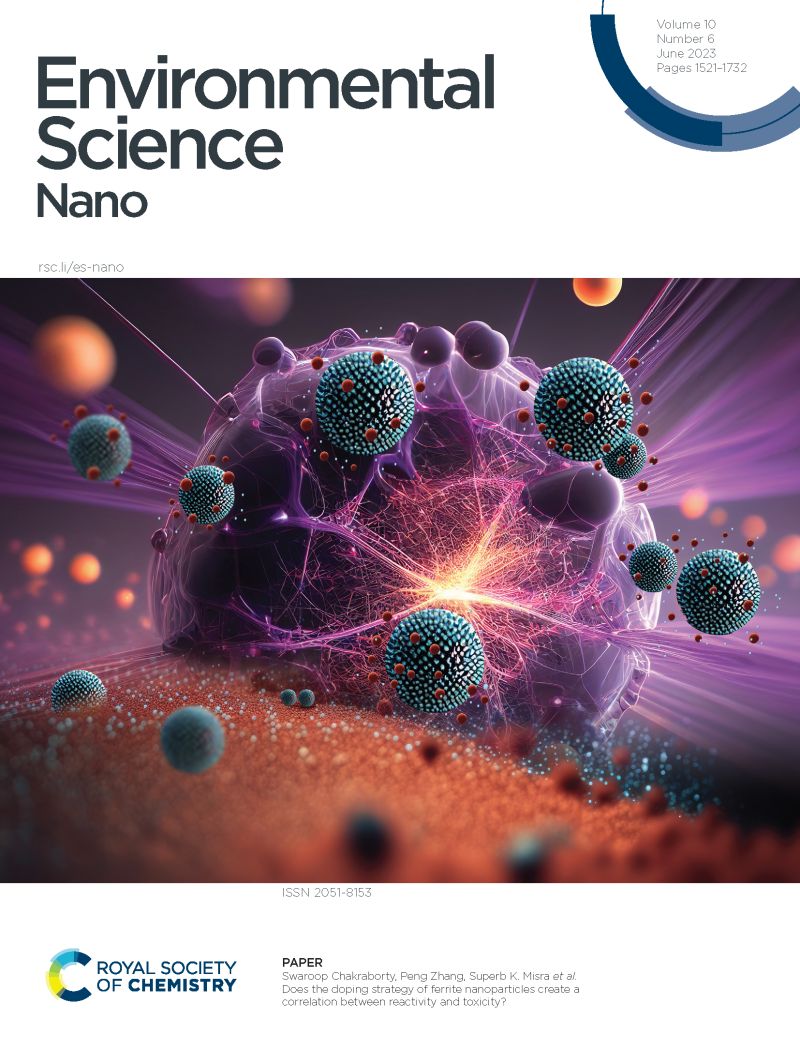Nanomaterials ROS: A Comprehensive Review for Environmental Applications
IF 5.8
2区 环境科学与生态学
Q1 CHEMISTRY, MULTIDISCIPLINARY
引用次数: 0
Abstract
Nanomaterials have garnered significant attention for their ability to generate reactive oxygen species (ROS), offering transformative solutions for environmental remediation. This review provides a comprehensive analysis and recent advancements in ROS generation mechanisms catalyzed by advanced nanostructures, including metal oxides, two-dimensional materials, perovskites, and hybrid composites. Key applications, such as wastewater purification, air purification, and degradation of persistent pollutants, are explored, demonstrating the unparalleled potential of these materials in addressing pressing environmental challenges. Techniques for detecting ROS, such as electron spin resonance (ESR), fluorescence probes, and spectrophotometry, are critically reviewed, highlighting their role in evaluating catalytic efficiency and understanding ROS dynamics. Special attention is given to design innovations, including heterojunction engineering and upconversion-based systems, which enhance light absorption, charge separation, and catalytic activity across the spectrum. Despite substantial progress, challenges such as scalability, long-term stability, cost-efficiency, and environmental compatibility persist. To address these issues, the review emphasizes the importance of green synthesis approaches and lifecycle assessments as pivotal strategies for future development. By synthesizing state-of-the-art advancements and identifying key research gaps, this review underscores the potential of nanomaterials to revolutionize ROS-mediated environmental remediation while setting a roadmap for sustainable innovation.求助全文
约1分钟内获得全文
求助全文
来源期刊

Environmental Science: Nano
CHEMISTRY, MULTIDISCIPLINARY-ENVIRONMENTAL SCIENCES
CiteScore
12.20
自引率
5.50%
发文量
290
审稿时长
2.1 months
期刊介绍:
Environmental Science: Nano serves as a comprehensive and high-impact peer-reviewed source of information on the design and demonstration of engineered nanomaterials for environment-based applications. It also covers the interactions between engineered, natural, and incidental nanomaterials with biological and environmental systems. This scope includes, but is not limited to, the following topic areas:
Novel nanomaterial-based applications for water, air, soil, food, and energy sustainability
Nanomaterial interactions with biological systems and nanotoxicology
Environmental fate, reactivity, and transformations of nanoscale materials
Nanoscale processes in the environment
Sustainable nanotechnology including rational nanomaterial design, life cycle assessment, risk/benefit analysis
 求助内容:
求助内容: 应助结果提醒方式:
应助结果提醒方式:


